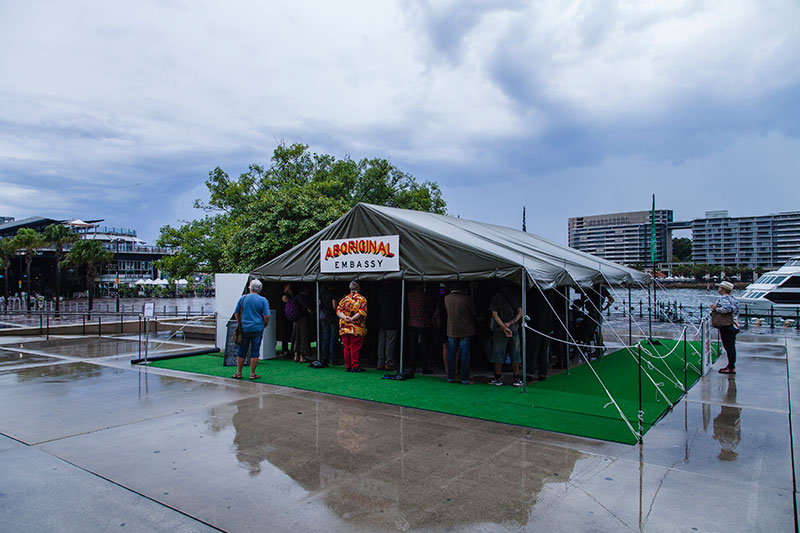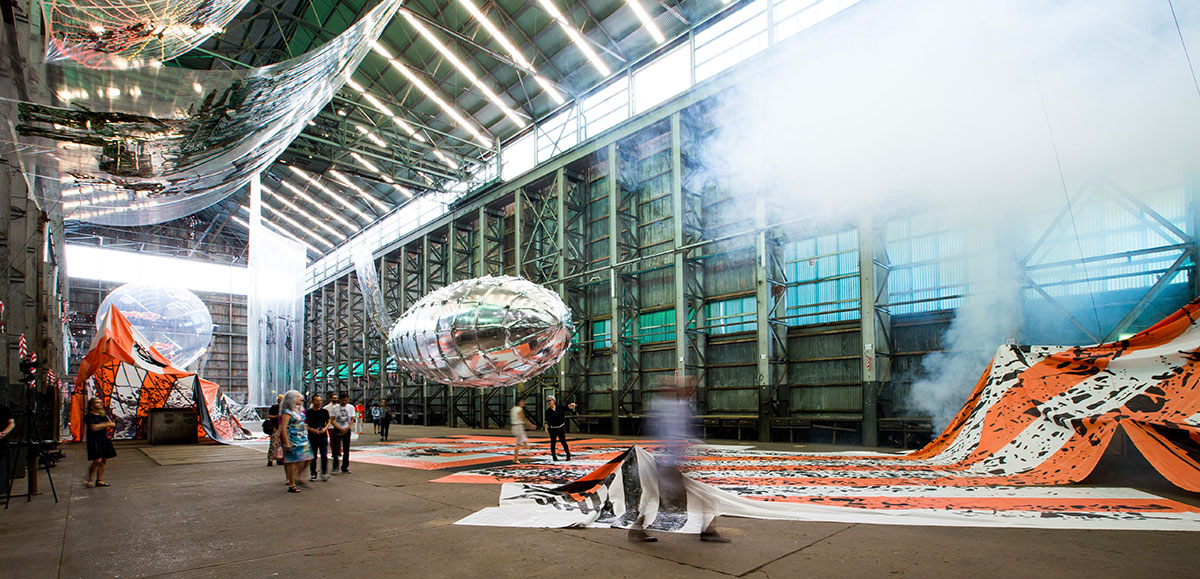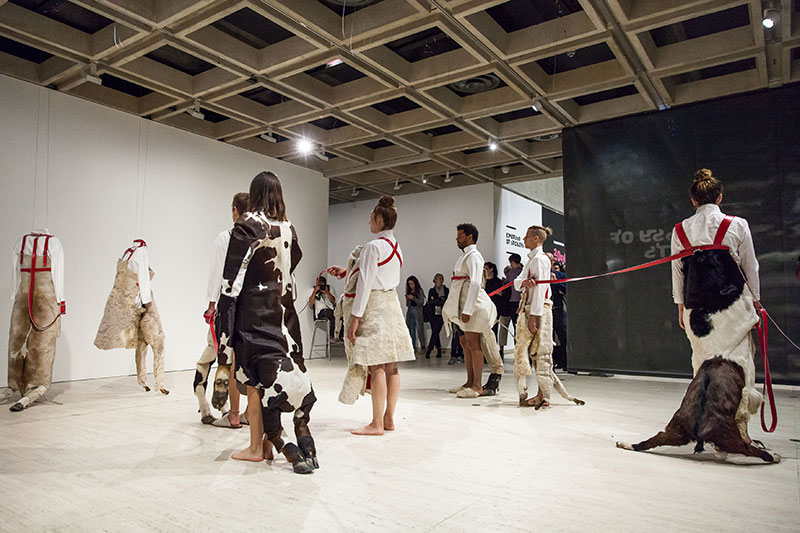
Stephanie Rosenthal’s 20th Biennale of Sydney is ambitious. Taking a quote from William Gibson as the titular starting point for an exhibition canvas as vast as the current state of Anthropocene thinking, her biennale offered a vision of an inequitable world under multiple sieges – political, climatic, environmental and economic. Gibson’s quip becomes the premise around which the biennale gravitates: a cipher for all things unequally distributed – wealth, pollution, poverty, technology, terrorism. The list goes on. If some of the artworks come across as a set of props or stage-sets, they nonetheless serve as portals for a series of conversations humanity has to have.
With a certain audacity, Rosenthal has divided the sphere of human endeavour into a set of Embassies of Thought, each given material form in the exhibition venues of the biennale. Her core idea is that each of these venues is a stimulus to reflection: Carriageworks hosts the Embassy of Disappearance, the Art Gallery of New South Wales becomes the Embassy of Spirits, Cockatoo Island is the Embassy of the Real, and the MCA is the Embassy of Translation. But it is the in-between locales like the Mortuary Station, The Block in Redfern and various other inner-city locations staged outside the business-as-usual art precincts, which convincingly echo Stephanie Rosenthal’s curatorial theme of unequal distribution, underscoring its counter-hegemonic premise. In a sense these locations were the real-world glue that anchored and consolidated this ideas-driven biennale (more so than Cockatoo Island’s Embassy of the Real).
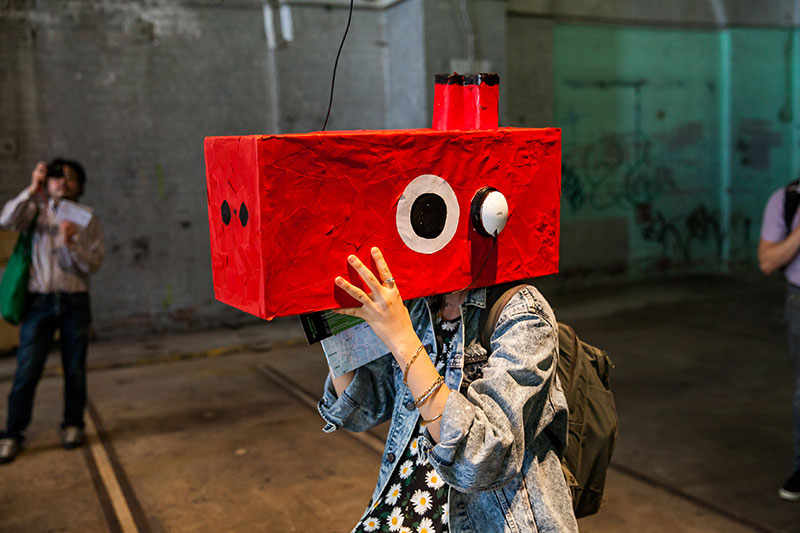
Thirteen co-curators were brought on board, as if to flesh out the depths of this vast tableau. And if, at times, the biennale felt as if it was less about the quality of the artwork than realising Rosenthal’s vision, the more you saw, the better it got. Rather than being characterised by standout works, the collective vision was strong and best appreciated through a process of steady accumulation of minor notes. Even though some works were unresolved, or indeed very much intentionally exhibited as unfinished like Christoph Schlingensief’s The African Twin Towers (a multiscreen installation of his incomplete film about restaging the terrorist attacks of 9/11 in Namibia), the ideas were compelling, and the conversations open-ended, like a set of problems requiring humanity’s collective solution.
French choreographer and performer Boris Charmatz delivered the keynote address on opening night followed by his acclaimed Manger (verb ”to eat” in French). With roots in the action-based Japanese performance-group Gutai (1949) and the event-scores of Fluxus (1960s), Manger could be conceived as instruction to a flash mob: assemble in ordinary street clothes and eat a sheet of rice paper. Writhe on the ground. Let passers-by reflect on the political symbolism inherent in the action. Toxic media? Indigestible public policies?
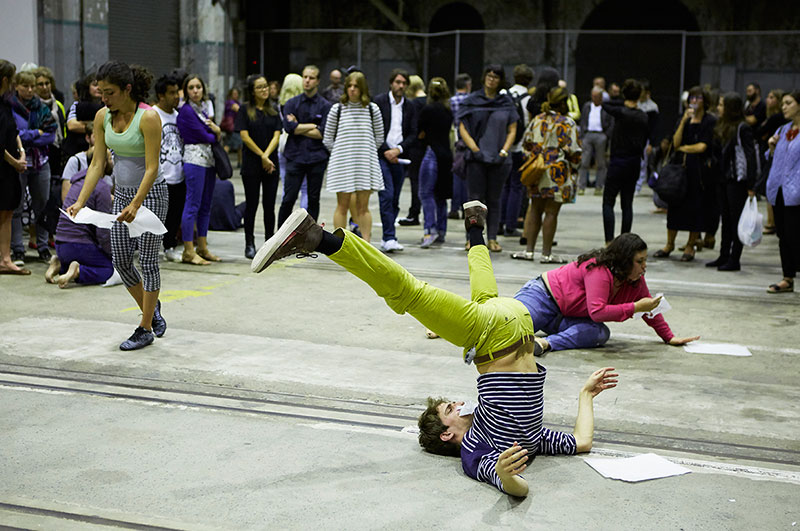
Ambiguously part protest, part Dadaist in its absurdity, the group action of Manger drew on performance’s foundation in radical agendas and the body in action. Historically, this absurdist aspect reflected on the origins of Dada (Zurich, 1916), when poet Tristan Zara cut up a newspaper and drew words out of a hat in a gesture of protest that reflected the irrationality of the First World War. The irrational actions of Manger connected to another core performance work in the biennale the restaging of the absurdist Futurist anti-opera, Victory Over the Sun (1913) by Justene Williams and the Sydney Chamber Opera.
Williams’ impressive costume pastiche tellingly exacerbated Futurist madness, in which the sun is torn down from the skies and imprisoned in a black box by technologically superior modern man. It’s an apt contemporary metaphor for our reliance on fossil fuels and collective disregard for the planet. A backdrop of Malevich’s Black Square dominated the stage, as in the original. In today’s context, this holy grail of Suprematist abstraction read as reduction to an ecological and political void.
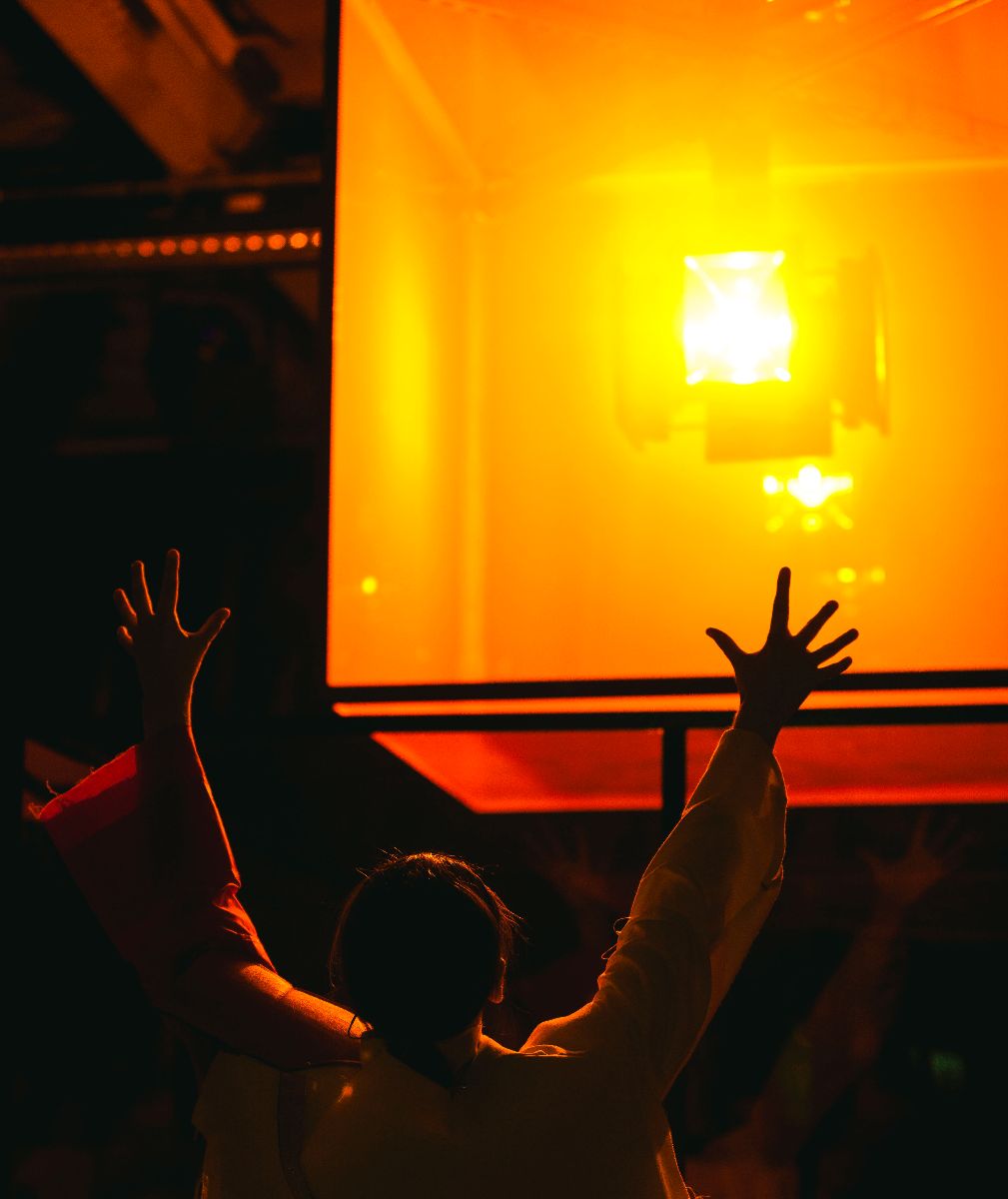
Germaine Kruip’s A Square, Spoken, reprised the Black Square as a performance for one. You are the sole audience member. For approximately twenty minutes an earnest young man takes you on a walking tour while he waxes on about the superior metaphysical qualities of the square in comparison to the deceptive triangle. His ardent conversation, which you dare not interrupt, extends the ramifications of Malevich’s Black Square to Plotinus, Plato, Pythagoras and various mystical sects, with much in between. It is mad, highly abstract, and entirely divorced from the political concerns of the real. It makes you question the trajectory of two thousand years of Greek thought and its endpoint in contemporary art. Also, as a critique of solipsistic reflection, it pointed out that the world is in dire need of productive, collective thinking.
The depth of historical research in this biennale is impressive. Not only is the Futurist/Suprematist legacy played out to a formidable dead end, but the audience is conducted back to another important rupture in the evolution of contemporary art –that of the steady progress towards the dematerialisation of the art object (this could be considered the reductionism of the Black Square in another guise).
Agatha Gothe-Snape’s Here, An Echo is a Situationist-inspired derive (or walk). In resistance to bourgeois-capitalist modes of production, Guy Debord proclaimed an end to the bourgeois art object in the Situationist Manifesto (1960). Instead, art became a matter of paying attention, of interrogation, and of the activation of urban sites through the agency of the body. Through the simple act of walking, the Situationists uncovered what they termed the hidden “psychogeographies” of the city. Here, An Echo takes biennale participants on such a walk through the unexpected. With the aid of dancerBrooke Stamp, vivid tableaus transform the experience of the moving sidewalk under the Domain. An Indigenous Uncle appears to mark the bora or corroboree sites. A little-used side door of the cathedral opens onto the stark vista of a Euro-plaza from the Cold War era.
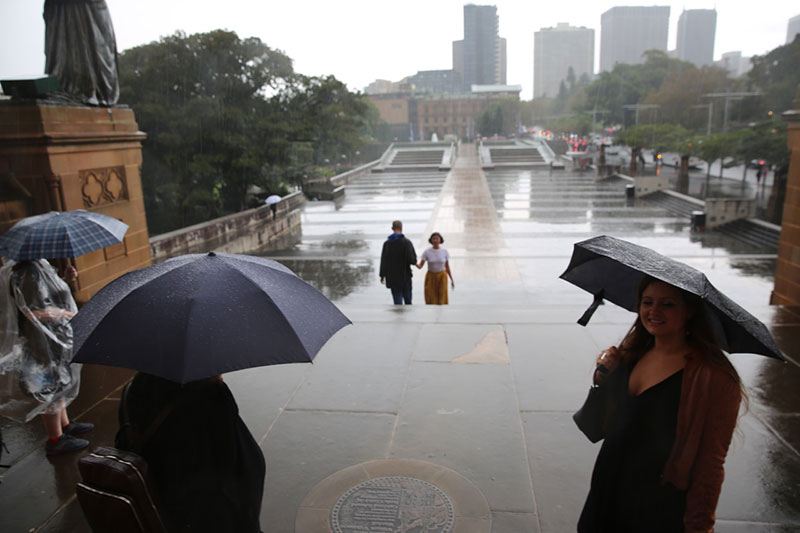
Mella Jaarsma’s Dogwalk takes performance into a more contemporary dimension of the ethics of care. Strange sets of animal skin clothes, finished with hoofs and hind legs as hems, are interconnected by straps of red leather that double as reins or the harnesses holding up Swiss lederhosen. Made from the skins of domestic animals slaughtered and eaten (goats, sheep, cows), the garments are worn on a walk by the folks who farmed them. (In the video they are also leading farm animals as well as their dogs.) From a historical perspective this parade was colonialist in its sartorial reminders. Most striking was the intimacy of the dead and the living and the evident symbiotic connections between human and animal. A solemn respect pervaded the work; you could imagine the prayers that were uttered for each animal sacrificed to the needs of the living, and the close connection linking the cycles of life and death. This was one of the best-resolved and successful works in the biennale and an antidote to works of ecological disaster, like the VR work on Fukushima’s no-go zone by Don’t Follow The Wind.
Another core strength of the biennale was the public program and dialogue-producing events. The art object further dematerialised in key works by Richard Bell and Keg de Souza. Both established tents as gathering places and host sites for the debates that were the core of the work. Outside the MCA, Bell installed a recreation of Canberra’s original tent embassy. With a loudspeaker he rallied passers by to join the current debate on changes to Indigenous representation in the constitution. Indigenous luminaries like Gary Foley kick-started the discussions. Addressing the international refugee crisis and the politics of displacement, Keg de Souza stitched together numerous tents to create a vast, mosque-like arena for discussion in the heart of Redfern, near The Block. In collaboration with Squatspace, her project included new tours of the seminal Redfern Tour of Beauty in order to link the broader topic of displacement of peoples to economic agendas.
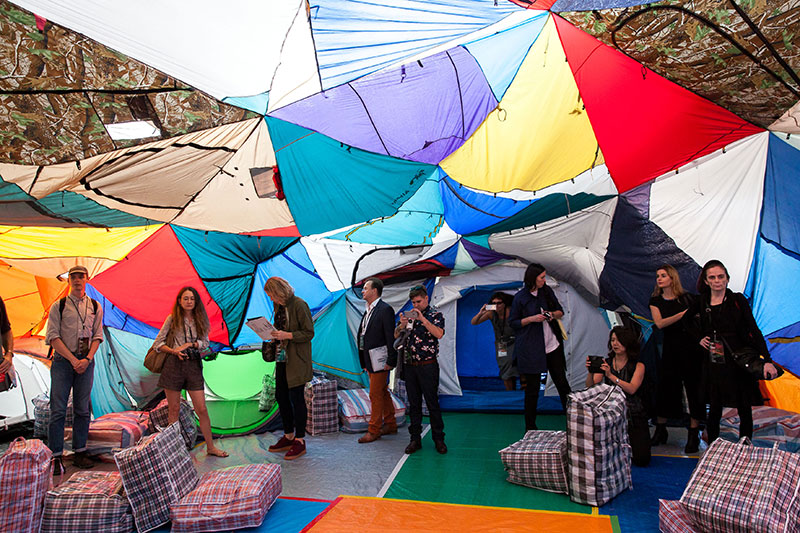
Another notable, and seemingly more permanent construction, was Archie Moore’s full-scale facsimile of the house Governor Phillip built in 1790 for Indigenous leader, Bennelong. Little more than the size of a cell it nonetheless was testament to the high esteem in which Bennelong was held, given the scarcity of building materials at the time. Today, standing outside the gated grounds of the splendid edifice of government house, with the Opera House in front, it represents the contemporary inequity and impoverishment suffered by many Indigenous Australians. The room notes amplify the layers of significance. Its simple dirt floor and corrugated-iron cladding recall the artist’s grandmother’s house and living conditions Moore well remembers in his own lifetime. As with many works in this biennale it pays to read the room notes; frequently, the installations cannot be taken as self-evident.
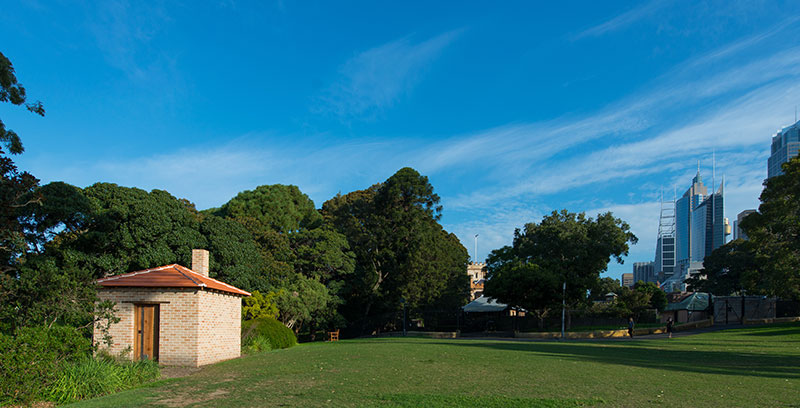
In a biennale branded with the words of techno-futurist, William Gibson, science fiction’s address to the future could be anticipated. But, refreshingly, Rosenthal’s biennale did not go down any predictable path. Heman Chong’s Embassy of Stanislaw Lem paid homage to the ongoing influence of the Polish science fiction writer, best known as the author of Solaris. In line with biennale themes of displacement, translation and dissemination, the work took the form of a roving second-hand bookstore, with titles in English and Polish (the latter indicative of large number of untranslated titles). Recontextualisation and misreading of Lem’s work were very much part of the process. His Common Characters segment invited eight contemporary authors from the Bureau of Writing to generate eight fictional characters based on Lem’s works (released on biennale’s website). The genius of this work was that Chong found the forms through which to express the complex processes of reading, interpreting and disseminating ideas, rounding out the project with a public performance of Lem’s works from the Stanislaw Lem reading group.
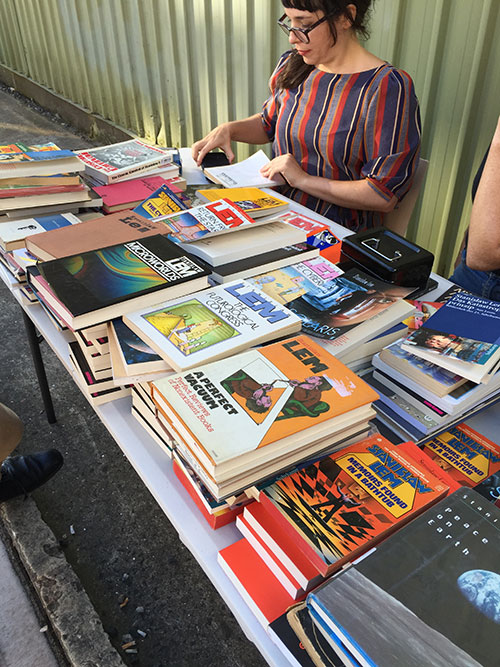
Lee Bul’s Willing To Be Vulnerable reminded that, paradoxically, the future does not always take place in the future, but can be re-inscribed in the past. Drawing on the nineteenth-century science fiction of Jules Verne, her contorted world of steam-punk escapism with its massive silver blimp and hot air balloon recalled the crashed blimp of 1937 Hindenberg disaster. In the massive turbine hall at Cockatoo Island, Bull wrestled with the space, draping great sheets of plastic, strip lights and splashes of red from the ceiling onto the floor, as a testament to overzealous human striving, and a reminder that the future sometimes fails.
In a similarly complex vein, Ming Wong’s Windows on the World (Part 2) confounds future visions and collective memory with a multiscreen installation on the history of Chinese science fiction. Merging the future fantasies of cinema (including snippets of Wong Ka Wei’s 2046) and reports of scientific achievement, the borders between fact and fiction, documentary and cinema began to leak. At a certain point you found yourself asking whether the Chinese really did land a man on the moon in the 1990s?
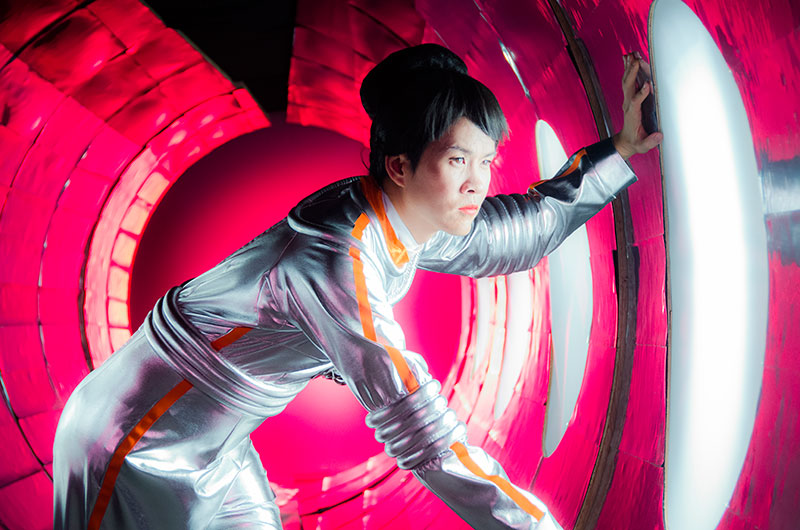
Ming Wong, Windows On The World (Part 1), 2014, mixed media. Installation view. Courtesy Para Site and Spring Workshop, Hong Kong. Photo: Glenn Eugen Ellingsen
Rosenthal’s 20th Biennale of Sydney is certainly a vast tableau, a snapshot of the state of the planet and the contemporary human condition. You need to see a lot of it to appreciate how well the multiple threads condense into a deep coherence. See too little and you may be disappointed. Overall, its chief concern is the collective vision and our role in directing humanity’s collective future. In many respects, the art could be said to defer to the urgency of the biennale’s many conversations. Several of its most important events take place in the closing four weeks. It is as if, after having given you time to absorb the breadth of its scope, you are invited back to reflect on what you have seen. With participants from “art, architecture, climate change, health, hacking, biotechnology, radical education, artificial intelligence, First Nations and traditional cultural knowledge, history/re-enactment and experimental economics”, Artspace’s Assembly For Alternative Futures is advertised as addressing the following questions: “How can we radically rethink the future with agency, hope and creativity? How can we generate alternative realities to the narrative of capitalist apocalyptic collapse?” (This event takes place at Artspace on Friday 13 May). On the same weekend, the final installment of Richard Bell’s Embassy will further debate Indigenous representation in changes to the Australian Constitution.
